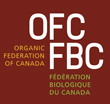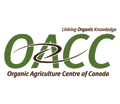Organic Science Cluster I (2009鈥�2013)
Canada鈥檚 Organic Science Cluster (OSC) ran from 2009-2013, and was a collaborative effort led jointly by the Organic Agriculture Centre of Canada (OACC) at AV俱乐部's Agricultural Campus and the (OFC). The Organic Science Cluster is part of the of Agriculture and Agri-Food Canada's Growing Forward Policy Framework and is supported by contributions from industry partners.
The goals of the Organic Science Cluster are to facilitate a national strategic approach to organic science in Canada, link scientists across the country and disseminate the knowledge generated to organic stakeholders.
The Organic Science Cluster identified 10 sub-projects, including 30 research activities that were conducted by over 50 researchers plus 30 collaborators in approximately 45 research institutions. Activities of the Organic Science Cluster included work in fruit horticulture, agronomy, cereal crop breeding, soil fertility management, vegetable production, greenhouse production, dairy production systems, parasite control in ruminants, environmental sustainability, and food processing.
This research came at a time when there was renewed emphasis on innovation, efficiency (energy, labour, economics), and capturing value-added markets. Most of this research directed toward organic agriculture can also be applied to conventional production systems, drawing interest to this cluster from producers across Canada.
For more information:
For more information about specific research activities:
Subproject A: Biologically-based fertility management
- Activity A.1: Characterizing soil phosphorus dynamics and availability under organic crop production
- Activity A.2: Predictive tools for characterizing mycorrhizal contributions to phosphorus uptake by organic crops
Subproject B: Integrated grain-based cropping systems
- Activity B.1: Changing weed populations under long-term organic crop production
- Activity B.2: Organic cereal crop breeding
- Activity B.4: Low-tillage grain production systems that suppress weeds and minimize tillage
- Activity B.6: Integrated grain-based cropping systems for biological and economic sustainability
Subproject C: Organic greenhouse production
- Activity C.1: Crop nutrition for vegetable plant propagation
- Activity C.5: Development of an organic greenhouse growing system for tomato that improves energy use efficiency and reuses the crop effluent as nutrient solution
- Activity C.6: Development of an organic greenhouse system for intercrop tomato and extended sweet pepper crop grown under supplemental lighting for year-round locally-grown fruit production
- Activity C.7: Feasibility of using geothermal energy as heat and humidity control for an organic greenhouse tomato crop
- Activity C.8: Optimizing fertilization and irrigation management for a closed greenhouse organic tomato growing system
- Activity C.9: Production of organic cuttings and pot plants
Subproject D: Integrated management of horticultural field crops
- Activity D.1: Agroecosystem management for pest control in organic vegetable production
- Activity D.2: System productivity and N flows聽in two organic vegetable long term rotations:聽high intensity stocked rotation聽versus a聽low intensity stockless rotation
- Activity D.4: Organic production of vegetable transplants for gardeners
- Activity D.5: Organic production of peat blocks for vegetable seedlings and detection of abiotic and biotic stresses
- Activity D.7: Development of a weed management system for pumpkins grown for seed in Ontario
Subproject E: Environmental stewardship and product branding
- Activity E.1: Modeling farm scale energy and nutrient efficiency, and Global Warming Potential, as affected by management
- Activity E.2: Modeling Global Warming Potential (GWP) reductions associated with sub-watershed wide transition to organic farming
Subproject F: High value fruit production
- Activity F.1: Organic management of black currant during early establishment and production for an export market
- Activity F.2: Weed management for organic wild blueberry production
- Activity F.3: Ecologically sound soil management in perennial fruit plantings
- Activity F.4: Innovative herbicide and fungicide replacement strategies for organic apple production
- Activity F.6: Organic production of strawberries and raspberries under tunnels
- Activity F.7: Control of Rosy Apple Aphid (RAA) in organic apple orchards
Subproject G: Benchmarking the organic dairy production system
- Activity G.1: Assessment of health, welfare and milk composition on organic and conventional dairy farms
Subproject H: Organic food processing
- Activity H.4: Alternative approaches to direct addition of nitrite/nitrate for organic cured meats
Subproject I: Sheep parasite control
- Activity I.1: Over-wintering of gastrointestinal parasites in organic sheep production
Subproject J: Communication
 |
 |
 |
 |
